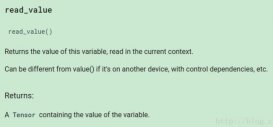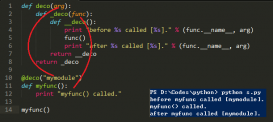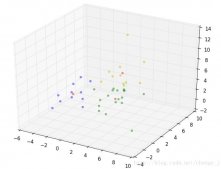Django 的 filter、exclude 等方法使得对数据库的查询很方便了。这在数据量较小的时候还不错,但如果数据量很大,或者查询条件比较复杂,那么查询效率就会很低。
提高数据库查询效率可以通过原生 SQL 语句来实现,但是它的缺点就是需要开发者熟练掌握 SQL。倘若查询条件是动态变化的,则编写 SQL 会更加困难。
对于以便捷著称的 Django,怎么能忍受这样的事。于是就有了 Aggregation聚合 。
聚合最好的例子就是官网给的案例了:
|
1
2
3
4
5
6
7
8
9
10
11
12
13
14
15
16
17
18
19
20
21
22
23
|
# models.pyfrom django.db import modelsclass Author(models.Model): name = models.CharField(max_length=100) age = models.IntegerField()class Publisher(models.Model): name = models.CharField(max_length=300)class Book(models.Model): name = models.CharField(max_length=300) pages = models.IntegerField() price = models.DecimalField(max_digits=10, decimal_places=2) rating = models.FloatField() authors = models.ManyToManyField(Author) publisher = models.ForeignKey(Publisher, on_delete=models.CASCADE) pubdate = models.DateField()class Store(models.Model): name = models.CharField(max_length=300) books = models.ManyToManyField(Book) |
接下来可以这样求所有书籍的平均价格:
|
1
2
3
4
|
>>> from django.db.models import Avg, Max, Min>>> Book.objects.all().aggregate(Avg('price')){'price__avg': Decimal('30.67')} |
实际上可以省掉 all() :
|
1
2
|
>>> Book.objects.aggregate(Avg('price')){'price__avg': Decimal('30.67')} |
还可以指定返回的键名:
|
1
2
|
>>> Book.objects.aggregate(price_avg=Avg('price')){'price_avg': Decimal('30.67')} |
如果要获取所有书籍中的最高价格:
|
1
2
|
>>> Book.objects.aggregate(Max('price')){'price__max': Decimal('44')} |
获取所有书籍中的最低价格:
|
1
2
|
>>> Book.objects.aggregate(Min('price')){'price__min': Decimal('12')} |
aggregate() 方法返回的不再是 QuerySet 了,而是一个包含查询结果的字典。如果我要对 QerySet 中每个元素都进行聚合计算、并且返回的仍然是 QuerySet ,那就要用到 annotate() 方法了。
annotate 翻译过来就是 注解 ,它的作用有点像给 QuerySet 中的每个元素临时贴上一个临时的字段,字段的值是分组聚合运算的结果。
比方说要给查询集中的每本书籍都增加一个字段,字段内容是外链到书籍的作者的数量:
|
1
2
3
4
5
|
>>> from django.db.models import Count>>> q = Book.objects.annotate(Count('authors'))>>> q[0].authors__count3 |
与 aggregate() 的语法类似,也可以给这个字段自定义个名字:
|
1
|
>>> q = Book.objects.annotate(a_count=Count('authors')) |
跨外链查询字段也是可以的:
|
1
2
3
4
5
6
|
>>> s = Store.objects.annotate(min_price=Min('books__price'), max_price=Max('books__price'))>>> s[0].min_priceDecimal('12')>>> s[0].max_priceDecimal('44') |
既然 annotate() 返回的是查询集,那么自然也可以和 filter() 、 exclude() 等查询方法组合使用:
|
1
2
3
|
>>> b = Book.objects.filter(name__startswith="Django").annotate(num_authors=Count('authors'))>>> b[0].num_authors4 |
联用的时候 filter 、 annotate 的顺序会影响返回结果,所以逻辑要想清楚。
也可以排序:
|
1
|
>>> Book.objects.annotate(num_authors=Count('authors')).order_by('num_authors') |
总而言之, aggregate 和 annotate 用于组合查询。当你需要对某些字段进行聚合操作时(比如Sum, Avg, Max),请使用 aggregate 。如果你想要对数据集先进行分组(Group By)然后再进行某些聚合操作或排序时,请使用 annotate 。
进行此类查询有时候容易让人迷惑,如果你对查询的结果有任何的疑问,最好的方法就是直接查看它所执行的 SQL 原始语句,像这样:
|
1
2
3
4
5
6
7
8
9
10
11
12
13
|
>>> b = Book.objects.annotate(num_authors=Count('authors')).order_by('num_authors')>>> print(b.query)SELECT "aggregation_book"."id", "aggregation_book"."name","aggregation_book"."pages", "aggregation_book"."price","aggregation_book"."rating", "aggregation_book"."publisher_id", "aggregation_book"."pubdate", COUNT("aggregation_book_authors"."author_id") AS "num_authors" FROM "aggregation_book" LEFT OUTER JOIN "aggregation_book_authors"ON ("aggregation_book"."id" = "aggregation_book_authors"."book_id") GROUP BY "aggregation_book"."id", "aggregation_book"."name","aggregation_book"."pages", "aggregation_book"."price","aggregation_book"."rating", "aggregation_book"."publisher_id", "aggregation_book"."pubdate"ORDER BY "num_authors" ASC |
相关文档: Aggregation
复合使用聚合时的相互干扰问题: Count and Sum annotations interfere with each other
总结
到此这篇关于Django中Aggregation聚合的基本使用方法就介绍到这了,更多相关Django Aggregation聚合使用内容请搜索服务器之家以前的文章或继续浏览下面的相关文章希望大家以后多多支持服务器之家!
原文链接:https://segmentfault.com/a/1190000023097440












